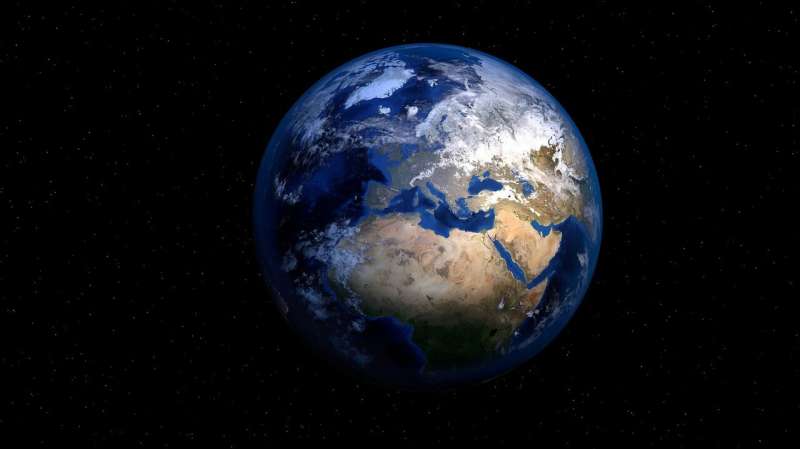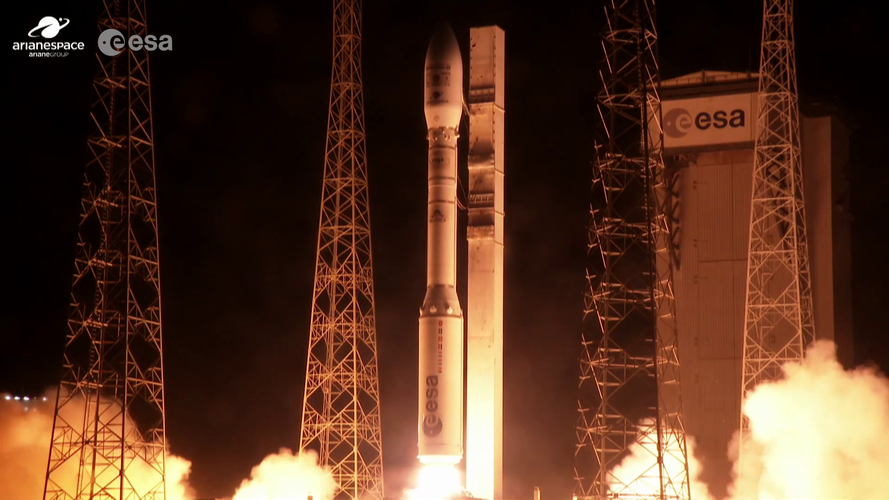
Copernical Team
NASA seeks development of universal payload interface
 NASA is calling on innovators to help solve some of the challenges in rapidly testing technology payloads across a wide range of commercial flight vehicles and test environments. As NASA explores the unknown in air and space, the agency is making increased use of commercial suborbital vehicles, spacecraft, and lunar landers to help advance new capabilities. However, the process to ensure payload
NASA is calling on innovators to help solve some of the challenges in rapidly testing technology payloads across a wide range of commercial flight vehicles and test environments. As NASA explores the unknown in air and space, the agency is making increased use of commercial suborbital vehicles, spacecraft, and lunar landers to help advance new capabilities. However, the process to ensure payload Vast $2 billion innovation hub is eyed at NASA Ames Silicon Valley complex

A vast $2 billion innovation hub is being eyed at the NASA Ames Research Center in Mountain View, a complex that's poised to become a birthplace for cutting-edge technologies.
UC Berkeley and SKS Partners, a veteran development firm, have teamed up to create what's being called Berkeley Space Center at NASA Research Park, officials said Monday.
"California's innovation and drive is not limited to Earth," Gov. Gavin Newsom said Monday.
The backers of the ambitious endeavor hope the space center will develop and create technologies in a wide array of fields.
"The joint venture is dedicated to identifying, incubating and launching technological breakthroughs across a diverse set of fields including astronautics, quantum computing, climate studies and the social sciences," UC Berkeley and SKS Partners stated on Monday.
The Berkeley Space Center is expected to total 36 acres including 1.5 million square feet of first-class offices and research spaces.
"This planned expansion of Berkeley's physical footprint and academic reach represents a fantastic and unprecedented opportunity for our students, faculty and the public we serve," UC Berkeley Chancellor Carol Christ said.
Vega VV23 liftoff
 Video:
00:04:00
Video:
00:04:00
On 8 October at 22:36 local time (9 October at 02:36 BST, 03:36 CEST) the 23rd Vega flight saw 12 satellites launched into Earth orbit. The rocket’s main passengers were the Earth observing THEOS-2 satellite and the meteorological satellite Triton.
THEOS-2 (THailand Earth Observation System-2) is an observation satellite manufactured by Airbus in for the Geo-Informatics and Space Technology Development Agency of Thailand. THEOS-2 is the largest of the two satellites in the series and will provide the Ministry of Agriculture of Thailand with information on water resources, weather and land use for planning and management.
Triton (formerly known
Webb detects tiny quartz crystals in clouds of hot gas giant
 Catching a glimpse of one of the most common and familiar minerals on Earth rarely merits a Webb detects tiny quartz crystals in clouds of hot gas giant. Quartz is found in beach sands, building stones, geodes, and gem shops around the world. It's melted to produce glass, refined for silicon microchips, and used in watches to keep time.
So what's so special about the latest discovery from
Catching a glimpse of one of the most common and familiar minerals on Earth rarely merits a Webb detects tiny quartz crystals in clouds of hot gas giant. Quartz is found in beach sands, building stones, geodes, and gem shops around the world. It's melted to produce glass, refined for silicon microchips, and used in watches to keep time.
So what's so special about the latest discovery from Extreme habitats: Microbial life in Old Faithful Geyser
 An eruption of Old Faithful Geyser in Yellowstone National Park is a sight to behold. Indeed, millions of tourists flock to the park each year to see it. Hot water and steam are ejected in the air to a height of 100-180 feet approximately every 90 minutes. Many adjectives come to mind to describe it: powerful, mesmerizing, unique, otherworldly . . . homey? Not so much.
Yet new research by
An eruption of Old Faithful Geyser in Yellowstone National Park is a sight to behold. Indeed, millions of tourists flock to the park each year to see it. Hot water and steam are ejected in the air to a height of 100-180 feet approximately every 90 minutes. Many adjectives come to mind to describe it: powerful, mesmerizing, unique, otherworldly . . . homey? Not so much.
Yet new research by Taking a Rain Check: Sols 3977-3979
 Earth planning date: Friday, October 13, 2023: It's been an exciting week in space - Conor already mentioned the news from OSIRIS-REX on Wednesday and just before I logged on for my shift this morning the Psyche spacecraft launched. But the week isn't over and weekends on Mars have lots of room for excitement.
Wednesday's pre-drilling tests on target 'Sequoia' (shown in the image above) mo
Earth planning date: Friday, October 13, 2023: It's been an exciting week in space - Conor already mentioned the news from OSIRIS-REX on Wednesday and just before I logged on for my shift this morning the Psyche spacecraft launched. But the week isn't over and weekends on Mars have lots of room for excitement.
Wednesday's pre-drilling tests on target 'Sequoia' (shown in the image above) mo Lab instrument now on two-billion-mile journey to the metallic asteroid Psyche
 An instrument designed and built by Lawrence Livermore National Laboratory (LLNL) researchers departed Earth last week on a two-billion-mile, nearly six-year journey through space to explore a rare, largely metal asteroid.
The Livermore high-purity germanium (HPGe) gamma-ray sensor is an essential part of a larger gamma-ray spectrometer (GRS) built in collaboration with researchers from Jo
An instrument designed and built by Lawrence Livermore National Laboratory (LLNL) researchers departed Earth last week on a two-billion-mile, nearly six-year journey through space to explore a rare, largely metal asteroid.
The Livermore high-purity germanium (HPGe) gamma-ray sensor is an essential part of a larger gamma-ray spectrometer (GRS) built in collaboration with researchers from Jo Cliffhangers go by the name of 'Stand By' in Mission Ops: Sols 3980-3981
 Earth planning date: Monday, October 16, 2023: We are just at the first steps of the next drilling campaign, as regular readers of this blog will certainly have spotted already. The last plan had the preload test, that little dent we make into the rocks to gauge how both the rock and the rover's arm will react to the pressures and stresses of the drilling. It's a good forecast, but rocks are nat
Earth planning date: Monday, October 16, 2023: We are just at the first steps of the next drilling campaign, as regular readers of this blog will certainly have spotted already. The last plan had the preload test, that little dent we make into the rocks to gauge how both the rock and the rover's arm will react to the pressures and stresses of the drilling. It's a good forecast, but rocks are nat Simulations of 'backwards time travel' can improve scientific experiments
 Physicists have shown that simulating models of hypothetical time travel can solve experimental problems that appear impossible to solve using standard physics.
If gamblers, investors and quantum experimentalists could bend the arrow of time, their advantage would be significantly higher, leading to significantly better outcomes.
Researchers at the University of Cambridge have shown
Physicists have shown that simulating models of hypothetical time travel can solve experimental problems that appear impossible to solve using standard physics.
If gamblers, investors and quantum experimentalists could bend the arrow of time, their advantage would be significantly higher, leading to significantly better outcomes.
Researchers at the University of Cambridge have shown Hypervelocity impact experiments probe the origin of organics on the dwarf planet Ceres
 One of the most exciting findings from NASA's Dawn mission is that Ceres, the largest object in the asteroid belt that lies between Mars and Jupiter, hosts complex organics. The discovery of aliphatic molecules, which consist of carbon and hydrogen chains, in conjunction with evidence that Ceres has abundant water ice and may have been an ocean world, means this dwarf planet might have once harb
One of the most exciting findings from NASA's Dawn mission is that Ceres, the largest object in the asteroid belt that lies between Mars and Jupiter, hosts complex organics. The discovery of aliphatic molecules, which consist of carbon and hydrogen chains, in conjunction with evidence that Ceres has abundant water ice and may have been an ocean world, means this dwarf planet might have once harb 